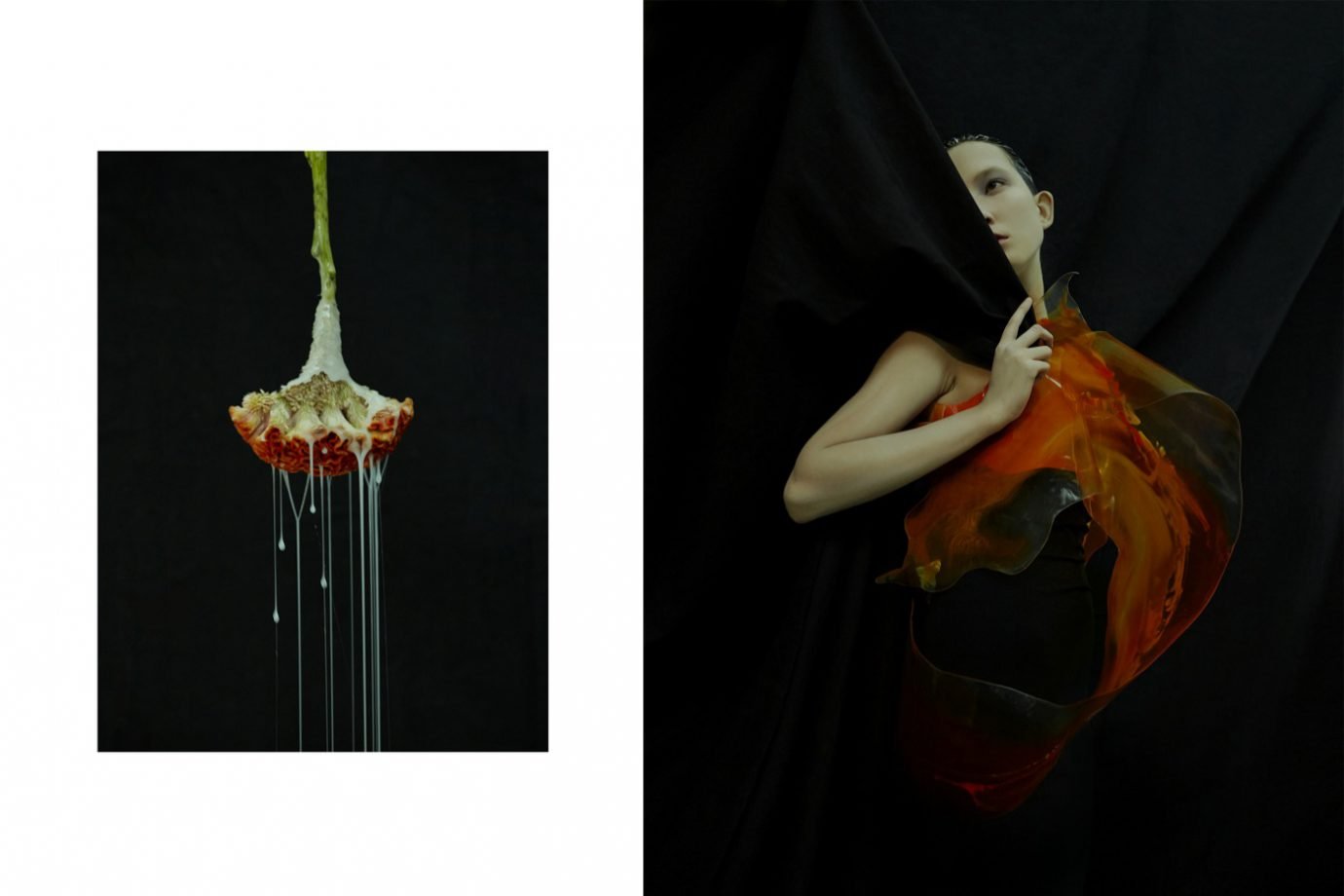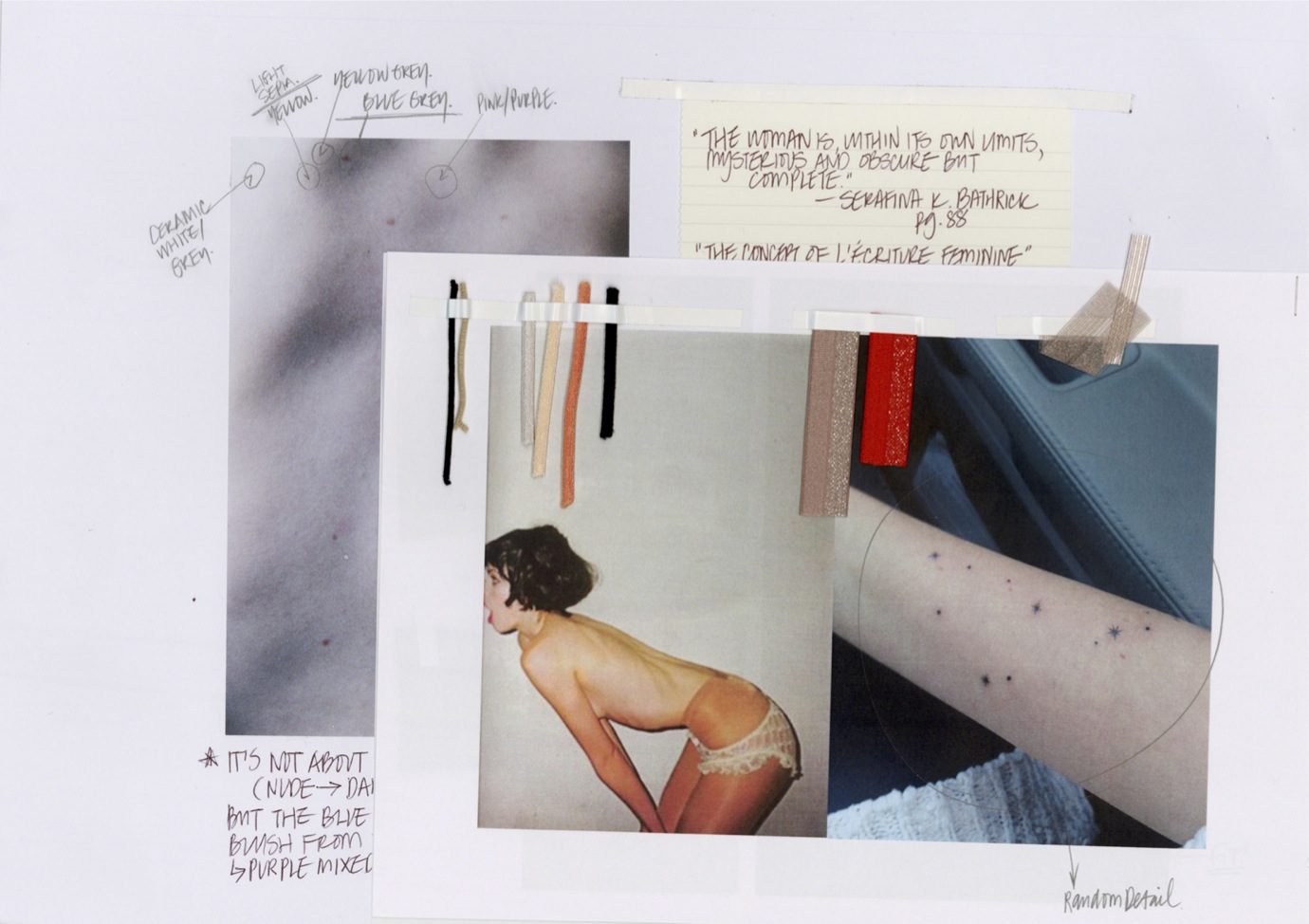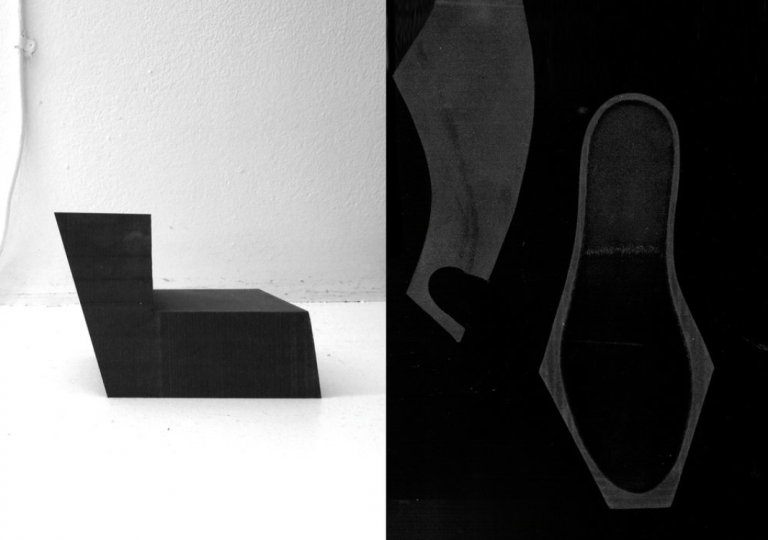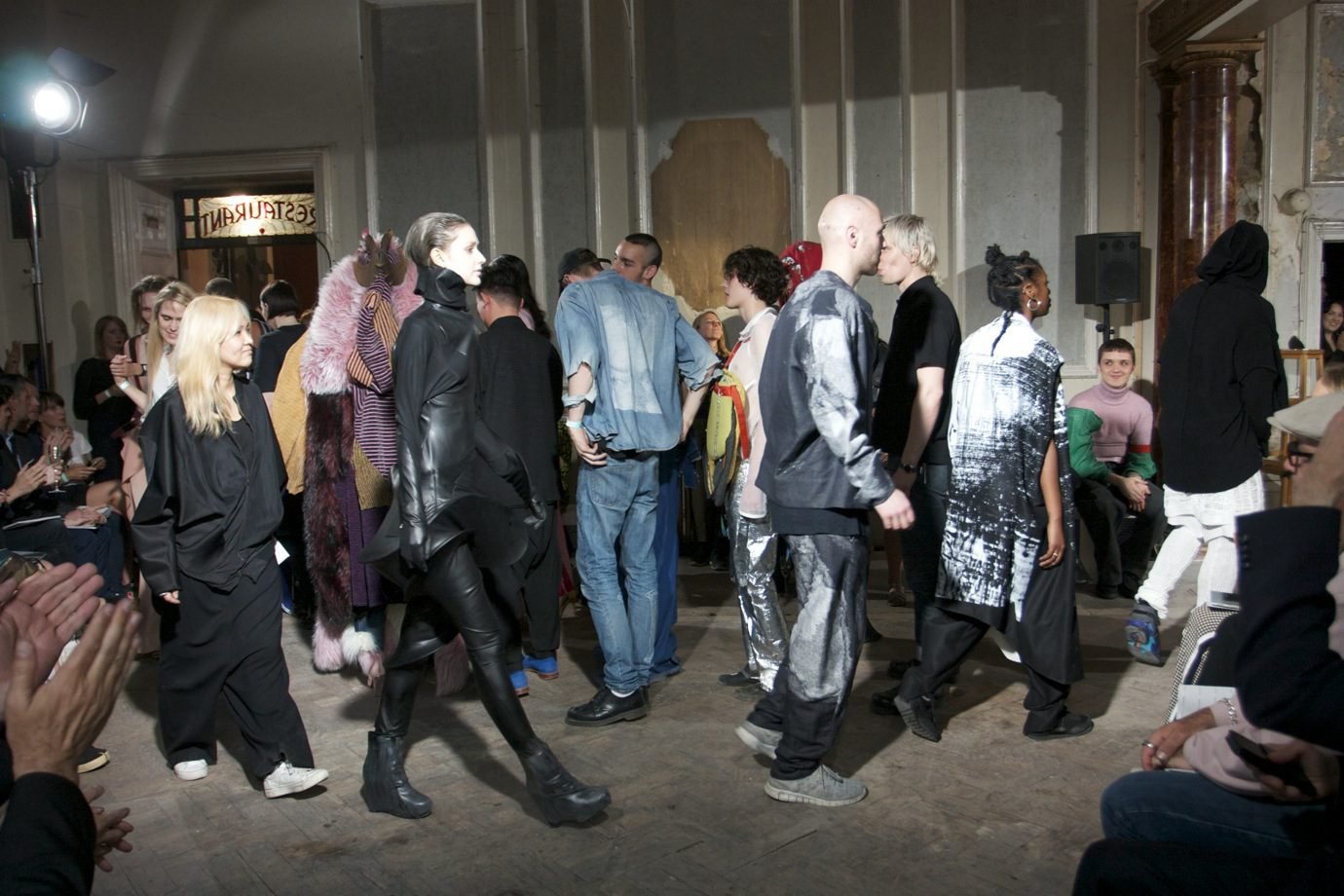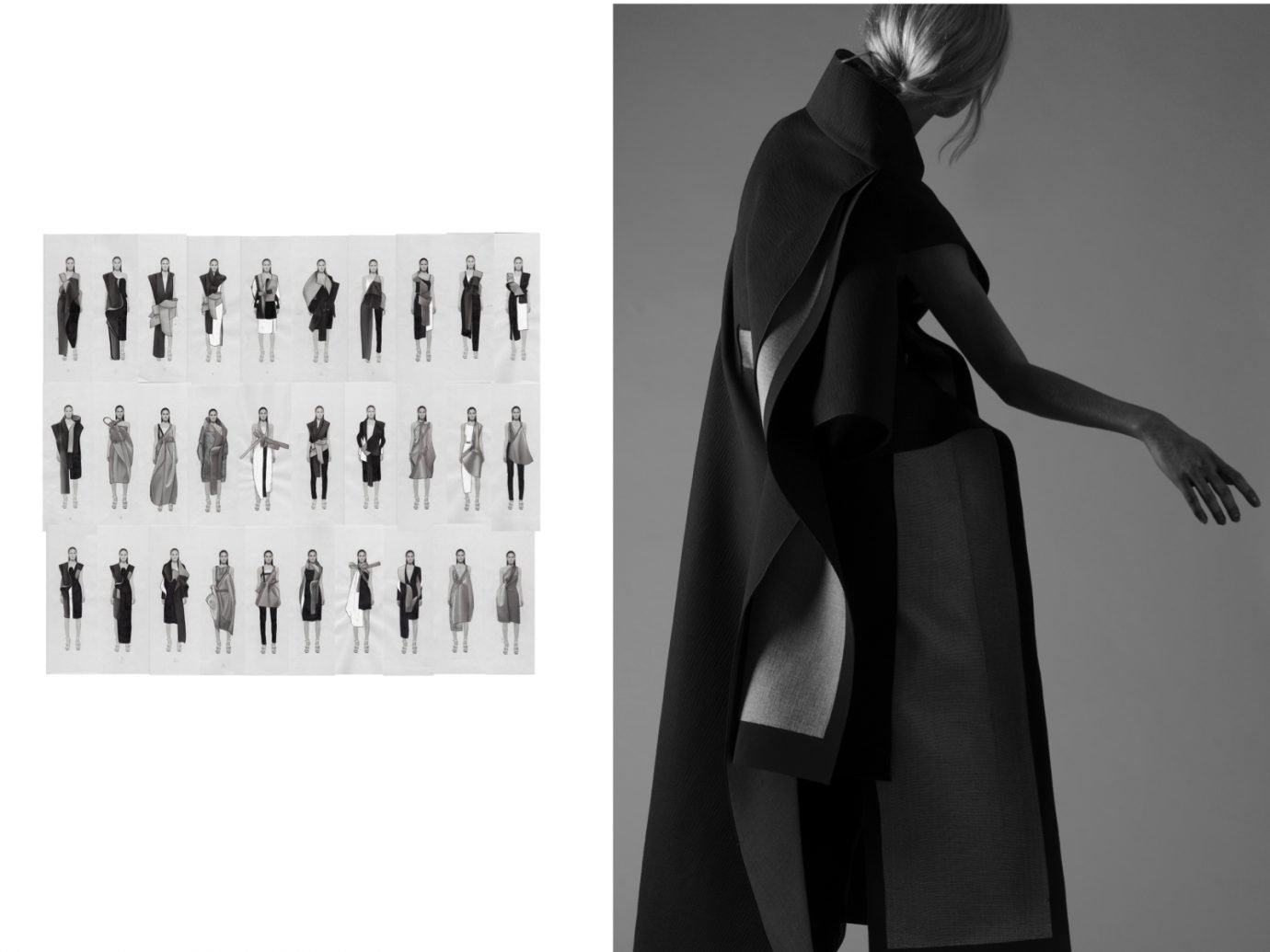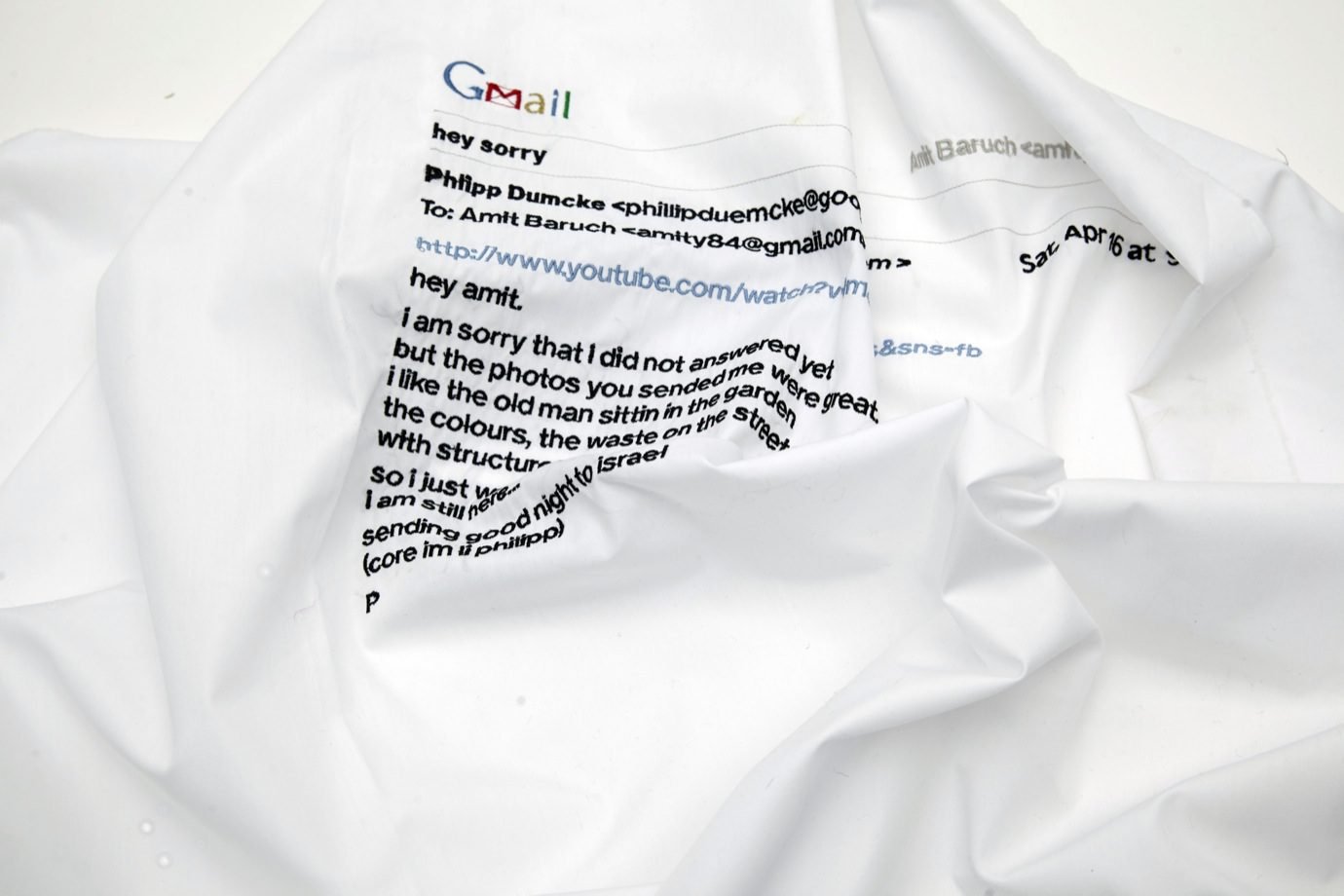Your website says: ‘Digital rendering and VR bring sustainability and efficiency to the traditional design practice.’ What do you mean by this?
This philosophy came from my experiences of working in the fashion industry. While working for luxury brands, I saw how wasteful their design processes were. Just one look could have up to ten fittings, which could mean ten different designs, prints and mock-ups. I also discovered that draping is a really wasteful way of working. I wanted to challenge myself to see if I could isolate this whole process to the computer. When I went back to the RCA, I designed my whole graduate collection on the computer. It allowed me to create with a sense of immediacy that I hadn’t experienced before. When you design in 3D on a computer, you get to see the full silhouette, but when you draw on paper, you only see the front or the back. Designing digitally means designing with a 360-degree view.
“Draping is a really wasteful way of working. I wanted to challenge myself to see if I could isolate this whole process to the computer.”
How does that philosophy influence the way you design now?
After designing that collection in 3D, I had all this clothing and an avatar that I’d designed with the same tools. From there, I started to create a 3D space. I placed my avatar inside the space and let other people enter my curated fashion environment. It was like a virtual showroom, but one that played with the senses: people could see and hear my collection. There were floating garments, more abstract designs and more poetic elements. It was really fun to experiment with. A virtual showroom is an exciting tool for new companies that may not have the budget for a big showroom or retail space. From a customer’s perspective, you can visit a newly designed shop every time. It will make for a more enjoyable and varied shopping experience.
“A virtual showroom is an exciting tool for new companies that may not have the budget for a big showroom or retail space.”


























